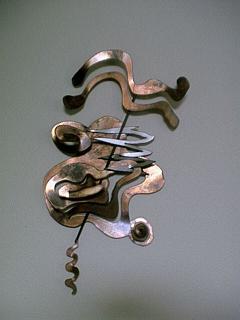|
Precious-metals:what you need them for?SOLUTIONS with effective, powerful advice
Precious-metals Precious metals include the platinum-group metals (Platinum, Palladium, Iridium, Rhodium, Osmium, Ruthenium), Gold and Silver.
Osmium is the rarest of the platinum-group precious metals. Its usage is fairly limited as an alloying element to provide other Precious-metals with extreme hardness and resistance to corrosion. Osmium forms a toxic oxide at fairly low temperatures and can only be manufactured by powder metallurgy procedures. Iridium, Rhodium and Ruthenium have limited workability. Their main use is to harden Platinum and Palladium as alloying elements. Of the other Precious Metals, silver, gold, platinum, palladium, and rhodium can be drawn to rod and wire of very thin diameter. Iridium and some of the platinum alloys containing iridium or rhodium can be drawn to small diameters. Sheet, strip, ribbon, and foil in a broad range of alloys, sizes, and thicknesses can be produced in Precious-metals. Silver, gold, platinum, and some of its alloys can be rolled to fine thicknesses but tolerances cannot be guaranteed. Clad materials can be obtained as wire, sheet, strip, and formed parts, with a great variety of substrate materials. Tube of Precious-metals is manufactured in different sizes and shapes.
If you did not yet find what you need, why not typing your question in the following Search Box?
Besides their obvious use as materials for jewelry (the largest use of gold), for coins and for artistic realizations from the dawn of civilization, Precious-metals have some unique properties that make them invaluable for certain specific industrial applications. In particular some of these important characteristics are resistance to tarnishing, corrosion and oxidation resistance, good electrical conductivity, catalytic activity, and excellent reflectivity.
Silver is used for jewelry, tableware, coinage, electrical contacts, dental amalgam and brazing alloys. Its usage for photographic and radiographic films is probably decreasing due to the development of new photographic techniques. Gold and its alloys are used, for jewelry, for electrical contacts, as a good reflector of radiation, for brazing alloys and for dentistry applications.
Pure and alloyed Platinum-group Precious-metals have a wide range of applications including jewelry, thermocouples, glass melting vessels and tools, laboratory hardware, medical devices, high-reliability electrical contacts and catalysts. The most common application for platinum and its alloys is as catalytic converters of automobiles and light trucks. Other applications of these catalysts are used in various chemicals manufacturing processes. For most applications, a Precious-metals alloy is more suitable than a pure metal because of the increased strength and other property changes brought about by alloying additions. Brazing is the most used joining process for Precious-metals, especially for jewelry and for dentistry works. These fields have selections of brazing filler metals that satisfy the specific demands of their disciplines. Some proprietary variations enrich the assortment of brazing filler metals for dentistry. They usually include gold, silver, copper, zinc, and tin. An extremely wide variety of gold jewelry filler metals is available. The list of gold filler metals often contains gold as the main element. One important consideration in the selection of filler metals for gold jewelry is that the filler metal does not reduce the gold content of the finished brazement. Platinum jewelry can be brazed with binary alloys of gold-platinum, platinum-silver, or palladium-silver, or with multiple precious metal alloys. Silver jewelry is generally brazed with silver-base filler metals that contain copper and zinc, tin, nickel, or cadmium. The last one tends to be eliminated because of health concerns. Filler metals for industrial applications of precious metals usually come from the American Welding Society (AWS) BAu and BAg groups, classified in
Other proprietary alloys are available for specific purposes. Manual oxyacetylene torch brazing is applied for unique jewelry or dentistry applications. Automated torch brazing has been applied to high-volume jewelry, such as chain making. Industrial precious metal users employ both manual and automated torch brazing, or furnace brazing in the industrial production of electrical contacts if it results more economical. The International Precious Metals Institute (IPMI) at The art of making jewelry is for talented people who have interest and drive to create appealing objects in total freedom. Jewelry making is relatively simple and provides satisfaction with minimum investment in production means. Start with a respected school or learn from an admired tutor. See:
Artwork for Hobby
Any questions or comments or feedback? Write them down and send them to us by e-mail. Click on the Contact Us button in the NavBar at top left of every page.
PRACTICAL HARDNESS TESTING MADE SIMPLE. Click on Subscription. To reach a Guide to the collection of the most important Articles from Past Issues of Practical Welding Letter, click on Welding Topics.
Cast Iron Welding Click here for the most important subject of
Follow this Invitation! Experience C2 power and flexibility in action by checking SBI! 2.0 For You. Watch - The Video: and also
POWERED BY: Click on this Logo NOW! Copyright (c) 2005, 2006, 2007, 2008, 2009, 2010, 2011, 2012, 2013, 2014, 2015, 2016, 2017 by
 Precious-metals are not only for pleasant jewelry. They play an important task in various fields of modern technology. See here...
|




